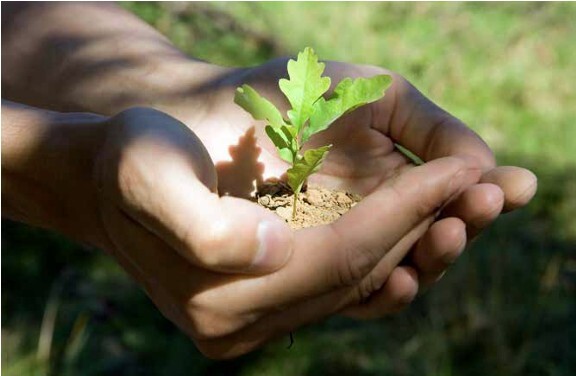Sustainability

One of the many benefits of wood floors is that the raw material used to make them is sustainable and renewable. Under good forest management, the harvested wood is “replaced” either by natural or artificial reforestation efforts, ensuring availability of forests and timber for future generations. The word “green” is often loosely used to describe products that are environmentally friendly. The practice of greenwashing occurs when a company allocates more time and money into advertising a product as being “green,” than they do reducing the product’s environmental impact. For a product to be truly considered green, there must be defensible scientific evidence to support the claim. A popular approach is to conduct a Life Cycle Analysis (LCA) of the product. An LCA is a systematic approach of detailing the environmental impact over the entire life cycle of the product. Wood flooring, both solid and engineered, have LCAs that have been conducted, along with Industry Averaged Environmental Product Declarations (EPD), and are available through NWFA.
There are approximately 514 million acres of timberland in the United States. Net annual growth in United States commercial hardwood forests exceeds harvest and mortality by 33% each year and the volume of United States hardwood growing stock increased by more than 130%, from 5.2 billion m3 in 1953 to 12 billion m3 in 2012. The total annual growth of United States hardwood species in the United States is more than 272 million m3 . In part because of this forest regeneration, North American forests have the lowest risk of illegal timber in the world.
Every country has a government agency or department that regulates forest usage and grant long-term land leases to the lumber companies that must provide a complete managed forestry plan. The government must approve these plans beforehand, so by the time logging actually begins, there is documentation to verify how, when, and where harvest took place, and what has replaced it. Whether by poor management in the past, or lack of long-term planning, some species still will become over-harvested. It is these issues that can produce shortages and environmental concerns. This is where specific regulations like the Lacey Act, CITES, and IUCN Red List (explained below) come into play.
The Lacey Act of 1900 is a conservation law in the United States that prohibits trade in wildlife, fish, and plants that have been illegally taken, possessed, transported, or sold. The 2008 Farm Bill amended the Lacey Act and extended its protections to a broad range of plants and plant products, making it unlawful to import into the United States any plant or plant product that was harvested illegally. To comply with the Lacey Act, an importer must declare the botanical identification of the product, the origin, and the amount or volume of the product in the shipment.
CITES (the Convention on International Trade in Endangered Species of Wild Fauna and Flora) is an international treaty among governments with the goal of ensuring that international trade in wild animals and plants does not threaten the survival of the species. CITES was conceived in the spirit of such cooperation. The species covered by CITES are listed in three Appendices (I, II, and III), according to the degree of protection they need.
• Appendix I contains species threatened with
extinction and commercial trade is prohibited.
Even the transport of scientific specimens is
highly controlled and monitored.
• Appendix II contains species that are threatened,
but close watch over the trade is required to
ensure they do not become endangered. Species
in this Appendix are commercially valuable and
actively traded according to officially determined
quotas for export.
• Appendix III contains species that are protected
in a specific country. That country has asked for
CITES help to regulate the trade worldwide and
control exports from the listing country. 25
The IUCN Red List (the International Union for Conservation of Nature’s Red List of Threatened Species) is an indicator designed to convey the urgency of conservation issues to the public and policy makers, as well as to help the international community reduce species extinction. It uses criteria to evaluate the extinction risk of thousands of species and subspecies, which includes information about range, population size, habitat, ecology, use and/or trade, threats, and conservation actions.
The IUCN Red List categories classifies species that are at high risk of global extinction. It divides species into nine categories:
• Not Evaluated (NE)
• Data Deficient (DD)
• Least Concern (LC)
• Near Threatened (NT)
• Vulnerable (VU)
• Endangered (EN)
• Critically Endangered (CR)
• Extinct in the Wild (EW)
• Extinct (EX)

